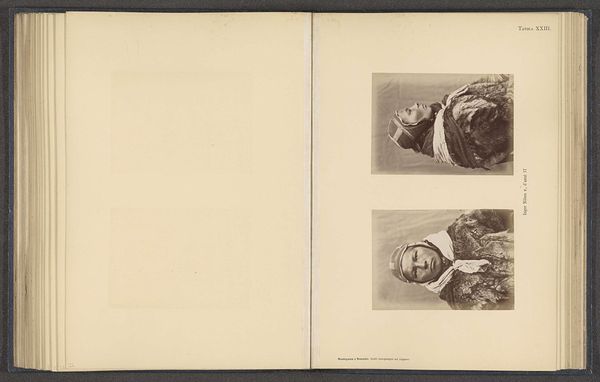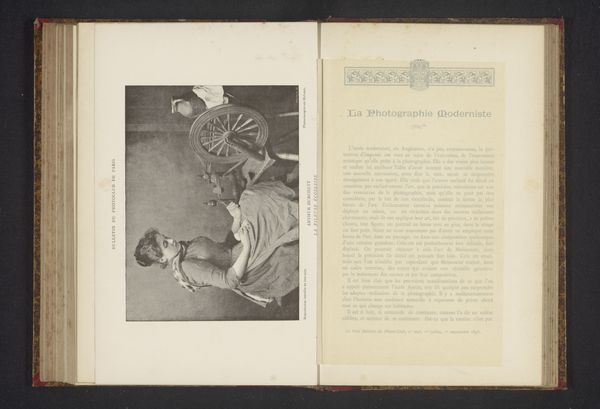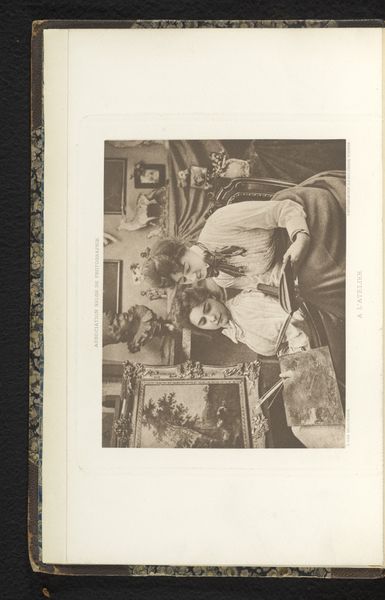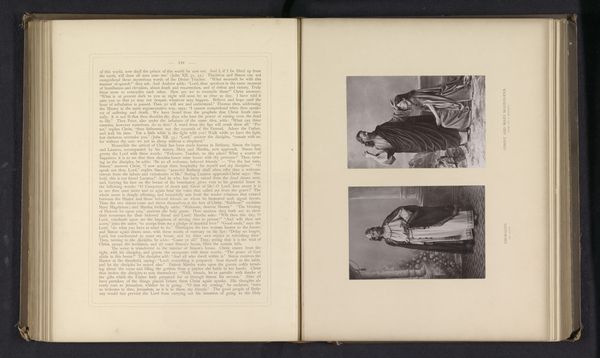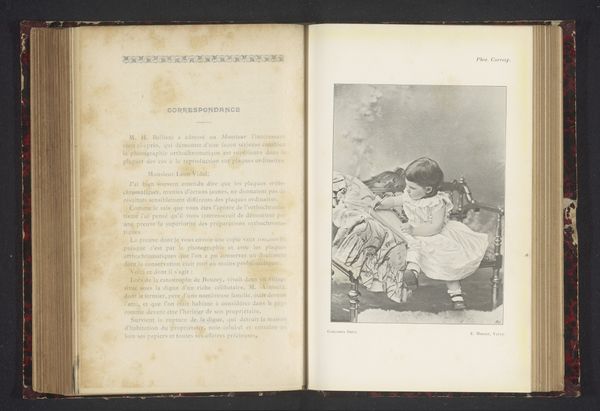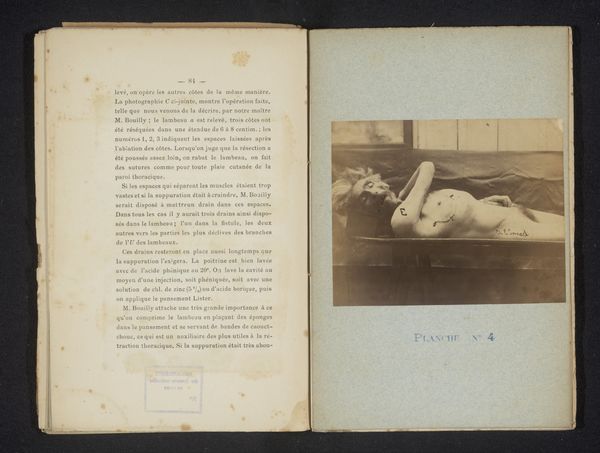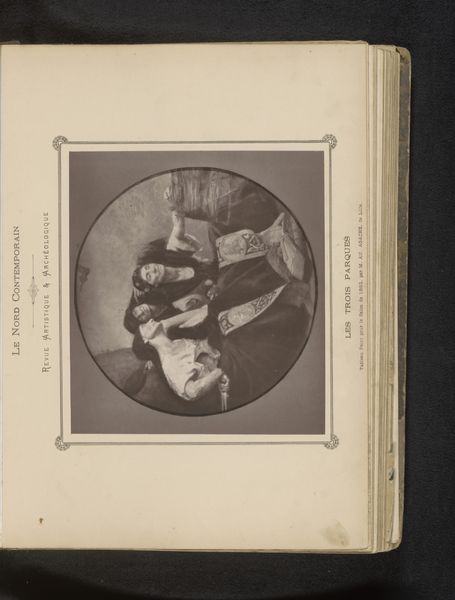
Vrouw met een litteken op haar borst na de verwijdering kwaadaardige tumor before 1884
0:00
0:00
#
aged paper
#
light pencil work
#
sketch book
#
hand drawn type
#
personal sketchbook
#
hand-drawn typeface
#
journal
#
sketchbook drawing
#
sketchbook art
#
watercolor
Dimensions: height 105 mm, width 90 mm
Copyright: Rijks Museum: Open Domain
Curator: This page comes from an anatomical journal, depicting "Woman with a scar on her breast after the removal of a malignant tumor." It's difficult to date precisely, but based on the style and subject matter, it's likely before 1884. Editor: The stark presentation of these three images… there’s a chilling directness. It’s interesting that all the entries are placed on the same page, which, in itself, resembles a comparative essay or experimental treatment across these patients. The page becomes a visual index of medical history. Curator: Absolutely. Observe how each figure is framed within its own oval or rectangular border, a classical composition almost like individual portraits despite their collective purpose within the medical text. Editor: It’s impossible to ignore the context, though. What did it mean to document women’s bodies in this way, for what audience, and with what consequences for both the women involved and the evolving medical gaze? It feels voyeuristic despite its stated clinical intention. Curator: That very tension is crucial to understanding its impact. Consider the use of watercolor. The medium allows for detail, especially of the face; the detail captures and makes explicit the pain and bodily change enacted onto the subjects, whilst also imbuing a soft beauty onto an uncomfortable sight for audiences. Editor: And consider, too, the unacknowledged labor involved in its creation. Each patient undergoes intense emotional labor and psychological pain as a photographic ‘subject,’ with the potential of objectification. What kind of care would have prevented a piece like this and promoted a subject's dignity rather than pain and trauma? The role of gender here is unmistakable. It forces us to question our ethical engagement with the history of medical science. Curator: It’s this fusion of technical skill and clinical subject that reveals to us not just the advancement of medical knowledge at that time, but also the broader, intricate tapestry of scientific observation. Editor: Indeed, the sketches offer a harrowing insight into a complex history of medicine, patient exploitation, and gender. It compels us to reflect on the present intersection between healthcare and social responsibility.
Comments
No comments
Be the first to comment and join the conversation on the ultimate creative platform.





